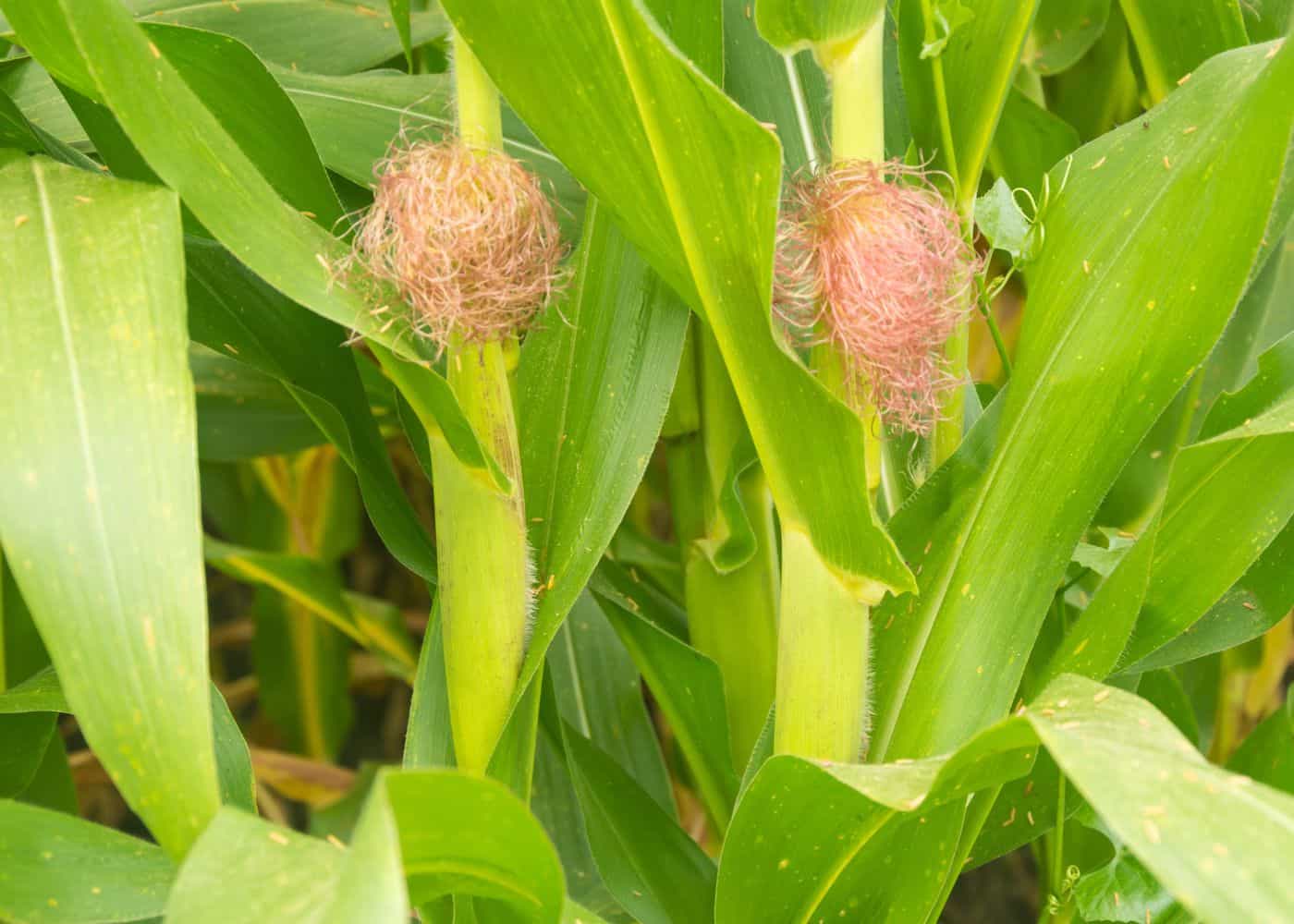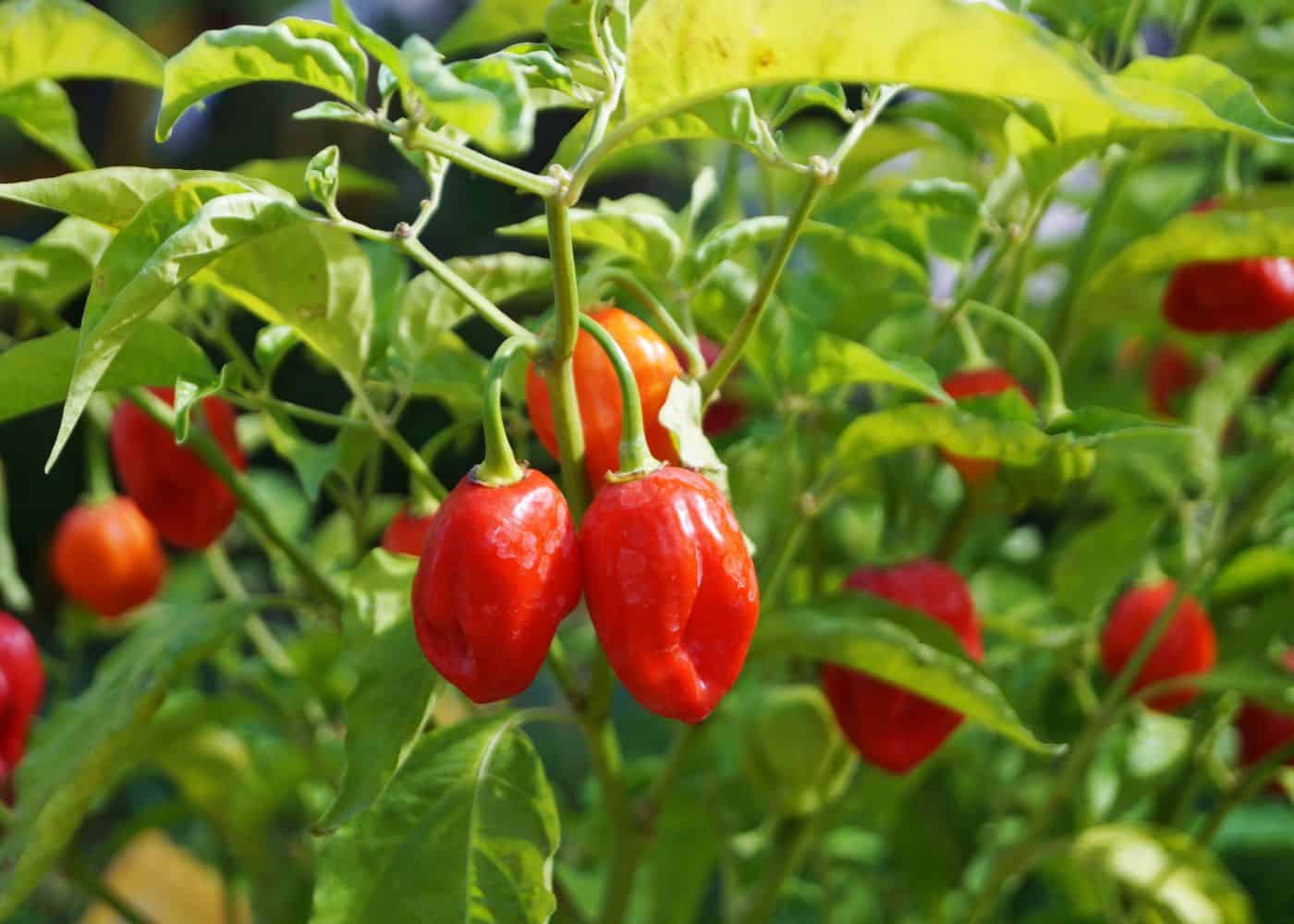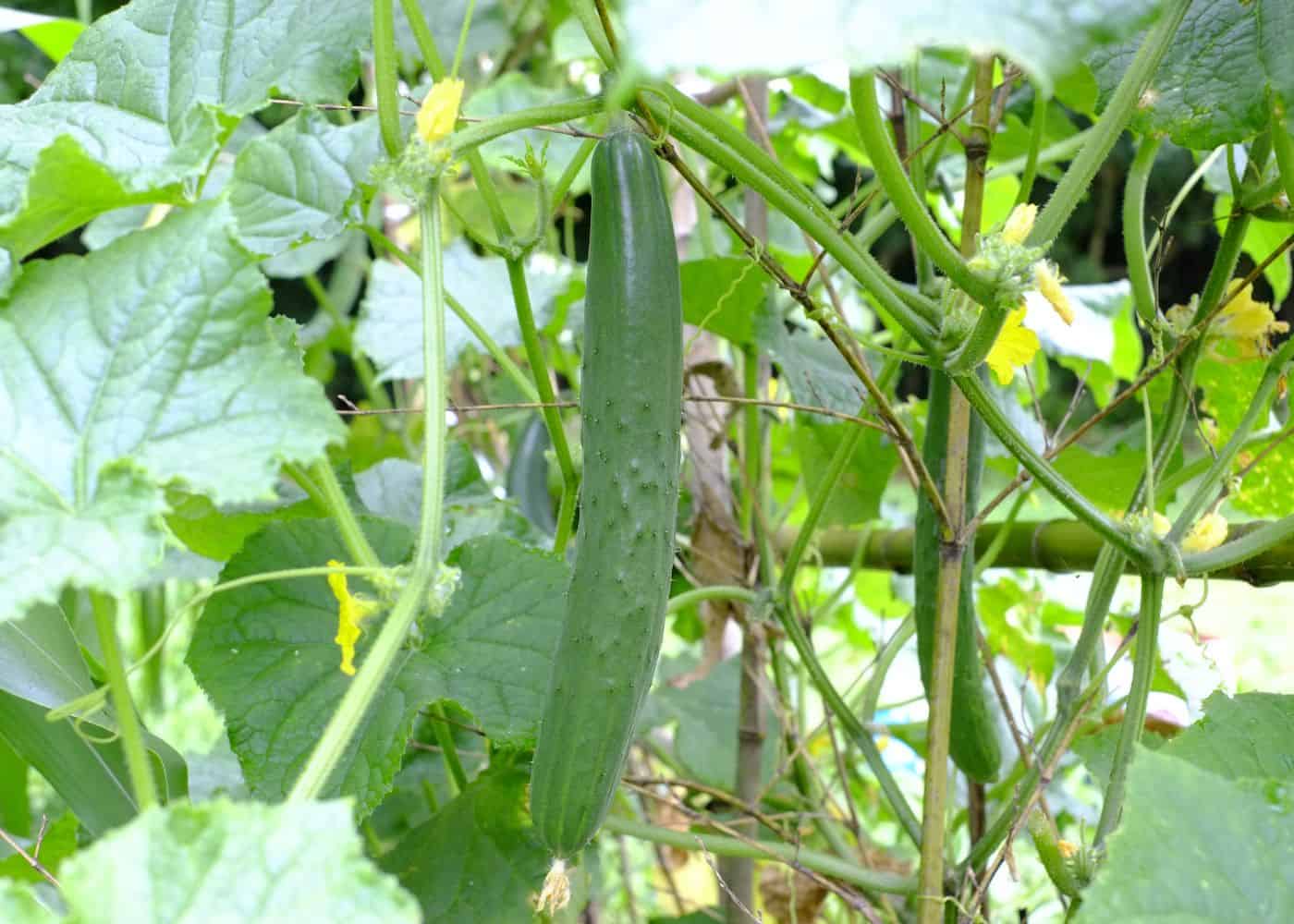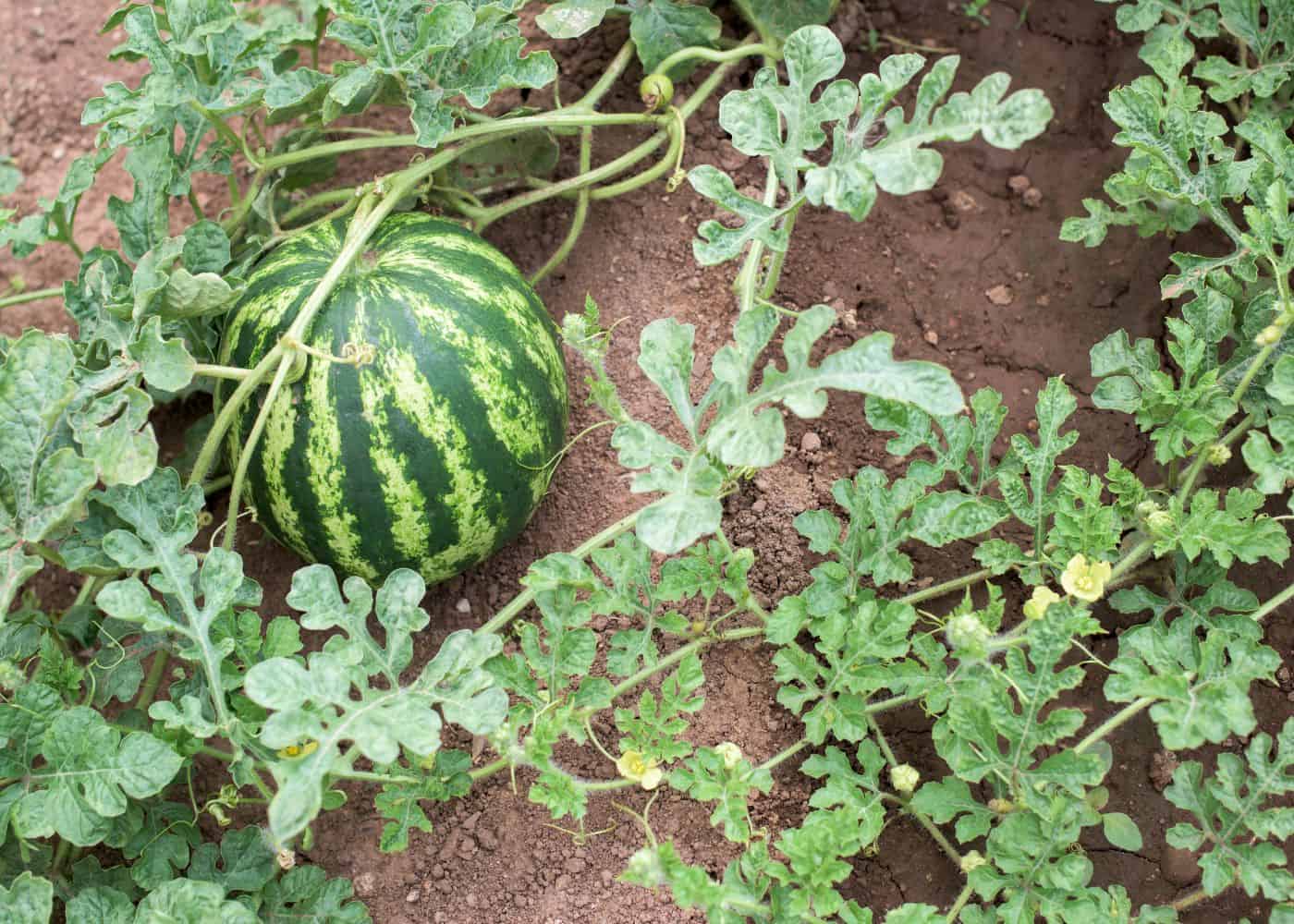Growing warm-season vegetables is one of the best parts of summertime. Warm season vegetables thrive in the hot temperatures and long days of summer. From tomatoes and beans to corn, peppers, cucumbers, pumpkins, sweet potatoes, watermelon, and squash – there’s something for everyone.

1. Tomato
Tomatoes are likely the most popular vegetable for home gardeners in North America. These warm-season veggies are easy to grow and come in many varieties, from small cherry tomatoes to large beefsteak tomatoes.
Tomatoes prefer full sun and well-drained soil that is rich in organic matter. Ensure your tomatoes receive adequate hydration and nutrition to achieve maximum growth potential during the growing period. Staking or caging your tomato plants will help keep them upright as they grow larger.
For best results, harvest tomatoes when they have achieved their optimum level of ripeness. Ripe tomatoes should be firm but slightly soft when squeezed gently; unripe fruits will continue to ripen if left on the vine for several days longer than the usual harvest time frames suggest. Tomatoes can be eaten fresh or cooked into sauces or other dishes – just remember not to refrigerate them. The cold temperature will damage their flavor and texture over time.
Canning is an excellent way to preserve homegrown produce as it eliminates air exposure which would otherwise cause spoilage due to bacteria growth. You can relish the yummy tastes of your homegrown vegetables all year round by using canning. Another great option for extending your tomato harvest is freezing; simply blanch slices of ripe tomatoes before packing them into freezer bags so they don’t stick together once frozen solid.

2. Bean
Beans are a great choice for North American gardeners. Not only are they full of essential nutrients, but beans can also be grown with ease and speed in many climates. They can be planted directly into the ground or started indoors and transplanted later on. Beans are available in diverse forms, from snap beans to bush beans, pole beans, and lima beans (although fava beans are considered cool-season veggies).
Snap beans are a favorite amongst home gardeners, due to their simple harvesting and the ability to be consumed fresh from the vine. The plants require full sun to thrive; plant them in well-drained soil that has been amended with compost or aged manure for best results. For optimal growth and yield potential, water your plants regularly throughout their growing season—about 1 inch per week is recommended—and fertilize every few weeks with a balanced fertilizer.
Bush beans are another type of bean that is widely grown by home gardeners due to its compact size (it doesn’t need staking) and high yields even when planted in small spaces like containers or raised beds. Bush bean varieties include both green snap bush beans (like Blue Lake 274) as well as yellow wax bush beans (such as Gold Rush). Plant Bush Beans about 2 inches apart at a depth of 1 inch deep; keep soil moist until seedlings emerge then reduce watering frequency but don’t let it dry out completely between waterings.
Pole beans have long vines that will need support from stakes or trellises so you’ll want to make sure you provide this before planting them if you plan on growing Pole bean varieties like Kentucky Wonder or Scarlet Runner. These vining plants should be spaced 4 inches apart at a depth of 1 inch deep; once seedlings appear thin out any overcrowded plants so there’s adequate space between each one for proper air circulation which helps prevent disease problems down the road.
Lima Beans can prove to be quite a fruitful endeavor if they are given ample room to climb; they yield large pods filled with succulent white seeds inside each pod. During their growing season, which typically lasts around seventy days depending on the chosen variety, ensure that you water them deeply twice weekly for optimal harvests shortly after planting time passes by.

3. Corn
Corn is another must-have warm-season vegetable in the summer kitchen garden. Gardeners grow sweet corn varieties (as opposed to the field corn grown by larger farms).
For optimal growth, corn should be planted in early spring when the soil temperature is at least 50°F (10°C). The ideal growing season for sweet corn lasts from late spring through late summer.
When cultivating corn in your veggie patch, make sure to select a locale that enjoys full daylight throughout the day. Plant a minimum of 4 rows close together—about 12 inches apart—and space each seed about 2–3 inches apart within each row.
To ensure success with your sweetcorn crop, pay attention to soil temperature and air temperatures during both germination and growth stages of development; cool weather can slow down growth significantly or cause plants not to produce ears at all. Keep an eye out for pests such as cutworms which may damage young plants; use floating row covers if necessary until plants become established enough to fend off these pesky critters on their own.

4. Peppers
Adding peppers to your summer garden can give dishes an extra burst of flavor, color, and texture. They’re easy to grow and care for in most hot climates, making them an ideal choice for novice gardeners. Moreover, a wide array of pepper varieties – from sweet to spicy – can be found to suit any palate.
For successful pepper cultivation in the home garden, various factors must be taken into account. First off, pick a variety that is suited for your climate zone. If you live in an area with cooler temperatures or shorter growing seasons then choose smaller pepper varieties such as jalapeno or Anaheim which have shorter maturation times than larger bell peppers that take longer to mature.
Prepare the ground for planting; ensure it is able to let water pass through easily, yet still retain enough moisture so that plants don’t wither in hot weather. Adding organic matter like composted manure or aged mulch will help improve drainage while also adding nutrients back into the soil as they break down over time. It’s also important not to forget about pH levels; ideally, aim for a slightly acidic pH range between 6-7 when planting peppers (you can test this using a simple pH testing kit).
When it comes time for planting season make sure you give each pepper plant plenty of space – at least 12 inches apart from other plants – so they have room to spread out their roots and get adequate sunlight throughout the day (at least six hours). Additionally, be sure not to crowd them together as this will reduce airflow which could lead to fungal diseases like blight setting in later on down the line if left unchecked. Finally water regularly for the most productive crop.

5. Cucumber
Cucumbers are warm-season vegetables that grow on vigorous vines. Plant cucumber seeds or seedlings in mid-spring when the soil is warm enough (about 60°F/15°C or more). Cucumbers thrive in high temperatures and need full sun, so they should be planted in an area with plenty of sunlight.
Maintaining the correct level of moisture in the soil is key when tending to young cucumber plants; too much can cause root rot and other diseases, while not enough can impede growth. The best way for home gardeners to ensure their cucumbers have enough water is by using drip irrigation systems that provide consistent moisture without overwatering.

6. Pumpkin
Pumpkins are a staple of the summer veggie patch. They’re relatively easy to grow, can be harvested in late summer or early fall, and have an amazing variety of uses. Whether you’re looking for decorative pumpkins for fall decor or something to make into pies and bread, pumpkins are a perfect choice.
For planting pumpkins, ensure you have a spot that receives full sun. First off, they need plenty of room to spread out – at least four feet between each plant is ideal. Mix in some compost, and avoid planting pumpkins in areas that don’t drain easily after a rain.
Once your pumpkin plants have been established in their new home, it’s time for some regular maintenance. Water them regularly (about one inch per week). Mulch around the base of each plant will help retain moisture while keeping weeds down. Additionally, adding compost or fertilizer every couple of weeks will give them extra nutrients as they grow bigger throughout the season.

7. Sweet potato
Sweet potatoes are a popular vegetable warm season crop for home gardeners. They are easy to grow, require minimal maintenance, and provide an abundant harvest of delicious tubers. Selecting the right kind of sweet potato for your local environment and soil is key to successful cultivation, as well as learning how to look after them during their growth period.
There are several types of sweet potatoes available such as Beauregard, Georgia Jet, Jewel, Centennial, or O’Henry that can be grown in most regions of North America with success. It is also important to purchase certified disease-free slips from a reputable source if you plan on planting them yourself rather than purchasing pre-grown starter plants from a nursery or garden center.
Once you have identified the ideal variety of sweet potato slips (or plants), it is time to get your hands dirty and prep the soil for planting. Adding organic matter such as compost or aged manure will provide essential nutrients while improving drainage, creating an optimal environment for root penetration when planted.

8. Watermelon
Watermelon is an incredibly popular summer fruit. When it comes to planting watermelons, there are several things you should consider before getting started. Choose a location that gets plenty of sun – at least 6-8 hours per day – for your watermelon patch. Provide your plants with ample nutrients for the season by incorporating organic matter such as compost or manure into the soil.
Make sure you space each plant about four feet apart from one another; this will help ensure good air circulation, which helps reduce disease pressure on the vines during wet weather periods. Finally, use mulch around each plant to keep weeds down and conserve moisture while keeping fruits clean when they’re ready for harvest later on.
Watermelons need lots of warm days, so don’t rush into planting until temperatures reach these levels consistently over multiple weeks. Otherwise, you risk having poor yields due to inadequate pollination from cooler temperatures or even frost damage from cold nights. The plants just don’t like to grow in cold weather. With proper care, your plants should give you loads of sweet treats come harvest time.

9. Squash
Squash is a superb warm-season selection for those in North America seeking to add some hearty nourishment to their gardens. Squash comes in many varieties, including zucchini, butternut squash, acorn squash, and spaghetti squash. Each type has its own unique flavor profile and texture.
Zucchini is one of the most popular types of summer squash available today. Smaller zucchinis have a more agreeable taste than those that are larger, which should be harvested while still young. Zucchinis can be grilled whole on skewers with other vegetables like bell peppers or onions for an easy summer side dish. Larger zucchinis also make great additions to salads or pasta dishes as well as being used in baking recipes such as zucchini bread or muffins.
Butternut squashes are a winter favorite among home cooks due to their creamy texture when cooked properly – perfect for making soups. Butternuts need plenty of space between plants so they don’t overcrowd each other; however, this allows them room to grow into large sizes which makes them ideal candidates for stuffing recipes like stuffed peppers or enchiladas. The hard outer shell protects the inner flesh from damage during harvest time which makes them easier to store over longer periods of time compared to other types of winter squashes too.
Acorn squashes have been around since ancient times yet remain popular today due to their sweet, nutty flavor. Roast slices up along with potatoes & carrots, and then top off your meal by adding some freshly grated parmesan cheese.
Spaghetti squashes may not look particularly appetizing at first glance, but once you cut open these stringy beauties, they reveal long strands resembling spaghetti noodles. These strings work perfectly within noodle dishes, plus they hold onto sauces really well, so you get maximum flavor out of every bite taken.

10. Okra
Okra can be easy to grow in hot North American gardens. With its long, tapered pods and bright green leaves, it adds texture and color to any garden bed. Okra requires full sun for best growth and prefers warm weather with temperatures above 70 degrees Fahrenheit (21 Celsius).
Planting okra in well-drained soil is essential; if the soil stays too wet or soggy, the plants won’t do well. Seeds should be placed at a distance of two inches from each other when planted directly in the soil, allowing them room to expand as they develop. The plant grows quickly and can reach heights of up to five feet tall.
Once established, okra needs regular watering during dry spells but should not be overwatered as this can cause root rot and other diseases. Fertilize your plants every few weeks with an all-purpose fertilizer or compost tea for optimal growth. If you’re growing okra in containers, make sure you use a potting mix that drains well and fertilize more often than when grown in the ground since container soils tend to lose nutrients faster than those planted directly into the ground.

FAQs about warm-season vegetables
What is a warm-season vegetable?
A warm-season vegetable is an edible plant that tends to grow best in warm outdoor temperatures between 65-85 degrees Fahrenheit. These plants are sown in the springtime or initial summer months and reaped when it gets hot or towards autumn. Examples of warm-season vegetables include tomatoes, peppers, squash, eggplant, beans, corn, and cucumbers. Warm-season vegetables require more water than cool-season varieties so it’s important to keep them well watered during their growing period for optimal growth and harvest yields.
What are the characteristics of warm-season plants?
Warm-season plants prefer temperatures between 65-85°F (18-29°C) and require plenty of direct sunlight for optimal growth. They do not grow well in cooler temperatures and are killed by frost. They typically have shorter lifespans than cool season veg and require more frequent watering.
Warm-season plants tend to be sun-loving, so they need plenty of direct sunlight for optimal growth. Warm-season crops usually flower or fruit quickly and can be harvested within a few weeks after planting. Veggies like tomatoes, peppers, eggplants, beans, and squash are considered warm-season crops.
What are three common cool-season vegetables and three common warm-season vegetables?
Cool-season vegetables include broccoli, kale, and cauliflower. These veggies flourish in temps ranging from 45-75°F and can be planted either early spring or late summer. Warm-season vegetables such as tomatoes, peppers, and squash prefer warmer climates of 70-90°F with planting done after the last frost has passed.
What temperature do warm-season vegetables need?
Warm-season vegetables require reliable average temperatures of about 65°F (18°C) for optimal germination and growth. Once established, they need daytime temperatures between 70-85°F (21-29°C). Nights can’t be too cool, as warm-season vegetables require night temperatures of at least 55–60 °F (13–16 °C), with some species needing a minimum of 65°F (18°C). If the temperature drops too low or stays consistently below these levels, warm-season vegetable growth will be stunted.









